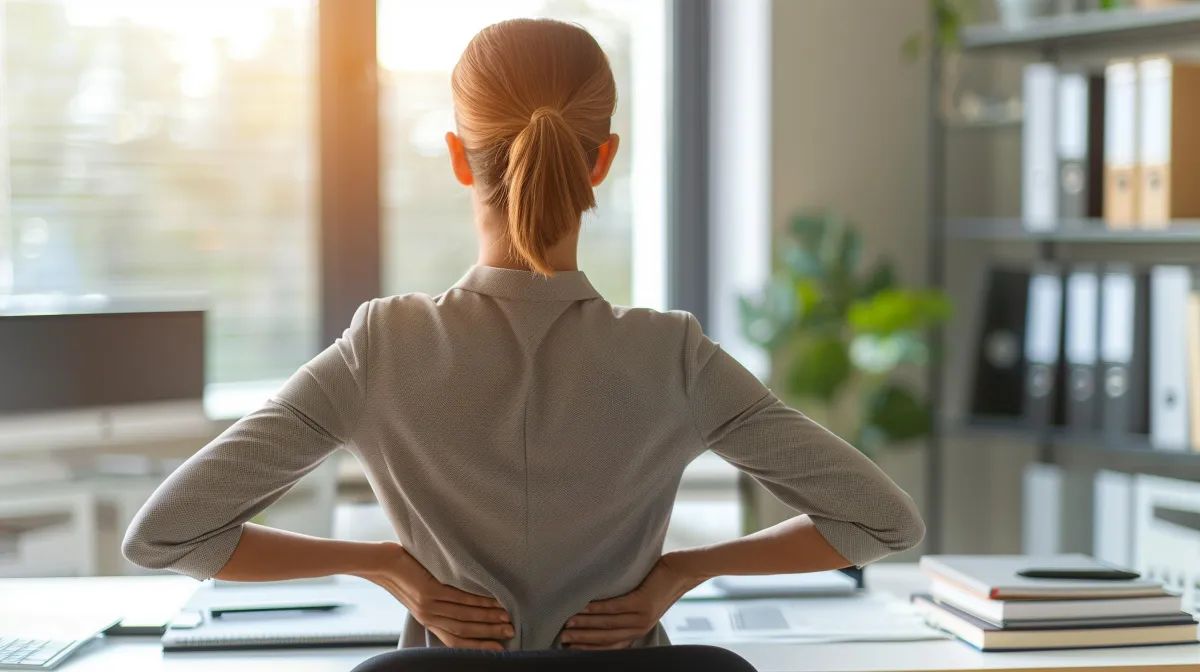Balance & Gait Disorders
Home » What We Treat » Balance & Gait Disorders
Achieve Balance with Physical Therapy Sessions
Feeling off-kilter, or not as stable on your feet as before? Grasping for walls and furnishings for balance? Experiencing joint pain in hips, knees or elsewhere that's altered your stride? You might be dealing with a balance or gait disorder.
Find your footing again! A multitude of factors can throw off your balance and alter your gait, leading to both physical discomfort and mental distress. These disruptions might stem from musculoskeletal or neurological conditions, but there's hope. Physical therapy offers a powerful remedy, capable of markedly diminishing your symptoms or even resolving your issues completely. Don't wait—take the first step towards stability. Reach out to Stride Physical Therapy and secure your appointment now for a steadier tomorrow!
Understanding Balance & Gait Disorders:
Discover the secrets behind your balance and gait mysteries! Often stemming from a symphony of factors, these disorders might arise from a multitude of underlying conditions. At the heart of balance challenges lies the vestibular system—a labyrinth of fluid-filled chambers and intricate sensory nerves nestled in your inner ear. This system, in concert with nerve receptors that waltz across your joints, orchestrates your body's position sense, or "proprioception.” Step into a world of equilibrium where every sense plays its part to perfection!
Discover the common vestibular conditions responsible for balance disorders:
Injuries or health setbacks:
Even when your brain and nervous system sync perfectly, unforeseen injuries, illnesses, or conditions triggering muscle weakness can disrupt your equilibrium, challenging your ability to stand firm.
Neurological Knots!
Face neurological challenges with ease! From Parkinson's to brain injuries or stroke effects, we know balance is key. Rely on us for expert neurological care, your pillar of stability.
Benign paroxysmal positional vertigo (BPPV).
When small pieces of calcium detach in the inner ear, it disrupts your balance.

Quick Links
Patient Form
FAQs
View More Services
What Sets Balance Apart from Gait Disorders?
Balance and gait disorders are conditions that disrupt your sense of orientation, change the way you walk or run, and make it difficult to stay balanced.
Balance and gait issues are interconnected, yet they differ slightly. Balance problems affect both body and mind, making you feel motion when you're stationary. Joint strength, flexibility, and spatial awareness all physically impact your balance.
Gait disorders affect your walking and running, leading to unnatural movements that often worsen as you get older. Move Forward Physical Therapy states that such disorders are behind 17% of elderly falls.
How can I find relief for my balance or gait disorder?
Physical therapy in Freehold, NJ is your top choice for better balance and walking. Our expert therapists will thoroughly assess your balance, gait, posture, medical background, and symptoms. We’ll then craft a tailored treatment plan just for you, which may involve:
Stretches:
Stretching makes you more flexible and helps you move easier. It helps you react faster and move more smoothly, all while lowering your injury risk. Plus, it stops your muscles from getting overly tight and rigid.
Strengthening exercises:
Our physical therapist will assess you to identify weak spots in your body. You'll receive strengthening exercises to boost muscle power, making movement easier and lowering injury risks.
Vestibular rehabilitation:
Our physical therapy program in Freehold, NJ, enhances your eyesight, nerve function, muscle strength, and overall balance system. Struggling with BPPV? Our therapists will guide you through targeted exercises that shift ear calcium deposits, reducing your vertigo.
Gait retraining exercises:
Gait issues can often be fixed by relearning correct walking methods.
Struggling with balance or walking difficulties? Reach out to Stride Physical Therapy and book a session with our expert therapists. We'll get you walking confidently in no time!
Health Blog

A Physical Therapist’s Perspective on Chronic Back Pain
At Stride Physical Therapy, we see a lot of chronic low back pain and it’s something we know how to handle. Understanding what causes this pain and how you can prevent it is important to us, so we always make sure our patients and their families are well-informed. Remember, having chronic back pain doesn’t mean you have to accept it as a normal part of getting older. You can still experience less pain and enjoy improved mobility, regardless of how long your back has been bothering you. Book an appointment with Stride Physical Therapy to get a personalized consultation. Keep reading to uncover five key insights our physical therapy team has learned about chronic back pain.
1. Most People Will Experience Back Pain at Least Once
Research shows that the majority of people (up to 80%) will have at least one episode of back pain in their lifetime. While not everyone will suffer from long-lasting pain, many cases resolve within a few weeks without special medical care. However, underlying issues like inflexibility or poor body mechanics can persist, increasing the likelihood of recurring pain and injury. Consulting with a physical therapist early can help uncover and address these hidden factors, reducing the risk of conditions like muscle strains, joint misalignments, degenerative disc disease, disc herniation, and nerve impingement.
2. Most Risk Factors for Chronic Back Pain Are Preventable
Many back pain risk factors are preventable. This means reducing your risk of chronic pain and alleviating symptoms is largely within your control. Common preventable risk factors include:
Sedentary lifestyle
Excessive weight
Smoking
Poor posture
Physically demanding jobs that require frequent sitting, bending, twisting, heavy lifting, or exposure to vibration
Stress, anxiety, and depression
At Stride Physical Therapy, we take a holistic approach to treatment, addressing both physical and psychological factors to help you achieve long-term relief.
3. Exercise Often Improves Chronic Back Pain
Moving around with chronic back pain can be challenging, but participating in daily movement is crucial for pain management. Exercise keeps muscles and tissues strong, boosts circulation, reduces chronic inflammation, enhances mood, relieves stress, and helps maintain a healthy body weight. Activities like walking, cycling, and specific exercises to improve tissue healing, strength, flexibility, and endurance are proven effective. A physical therapist can help you develop a safe, effective, and enjoyable exercise program tailored to your needs and goals.
4. Surgery and Long-Term Medications Aren’t Always Necessary
Contrary to popular belief, conditions like herniated discs don’t always require surgery. Invasive procedures like spinal fusions are usually not the first option for chronic back pain. Research indicates that only about half of first-time back surgeries alleviate symptoms, and repeat surgeries have even lower success rates. Surgery also carries risks such as prolonged recovery time and post-operative complications.
Physical therapy is recognized as a first-line treatment for chronic back pain, often reducing the dependency on opioid medications. This makes physical therapy a safer, more cost-effective option.
5. Chronic Back Pain Can Improve Even Without Knowing the Exact Cause
Many cases of back pain are "idiopathic," meaning the exact cause is unknown. Imaging studies like MRIs often don’t correlate with a person’s symptoms. A physical therapist is trained to evaluate, diagnose, and treat spinal conditions. Even if the exact cause is unclear, physical therapy can still provide relief by addressing symptoms and contributing factors like poor posture, decreased hip and shoulder range of motion, and weak core muscles.
Ready to Make Chronic Back Pain a Thing of the Past?
If you're ready to reclaim your active life and start living with less pain, contact Stride Physical Therapy today. Our team is dedicated to helping you achieve long-term relief and improved function.


